Nonoperative
1. Introduction
Functional nonoperative treatment applies only to nondisplaced proximal ulnar fractures or isolated radial head fractures that do not need surgery.
A sling, with or without swath, or a collar and cuff may be used as needed, particularly at night, and removed as comfort permits. Alternatively, a posterior splint for a few days can be considered if pain is severe. Circular cast is never indicated or used.
If there is concern about the fracture displacement, follow-up with x-rays within 7-10 days is advisable.
Healing should be secure within 4-6 weeks, following which resistance exercises may begin.

2. Functional treatment
Pain control
Adequate pain management helps to achieve early range of motion. Early aspiration of the radioulnar joint hematoma and subsequent intraarticular injection of local anesthetics might be performed. This allows analgesia for clinical assessment of range of motion. If a bony block is noticed despite good pain control, operative treatment must be considered.
Aspiration technique
The surface landmarks are the radial head, the lateral humeral epicondyle, and the tip of the olecranon (anconeus triangle). Flex the elbow 90 degrees and fully supinate the forearm. With this approach, only anconeus and capsule are penetrated. Insert an 18-gauge needle into the joint through the soft spot in the center of the triangle.

A collar and cuff sling may be used as an adjuvant for pain control.
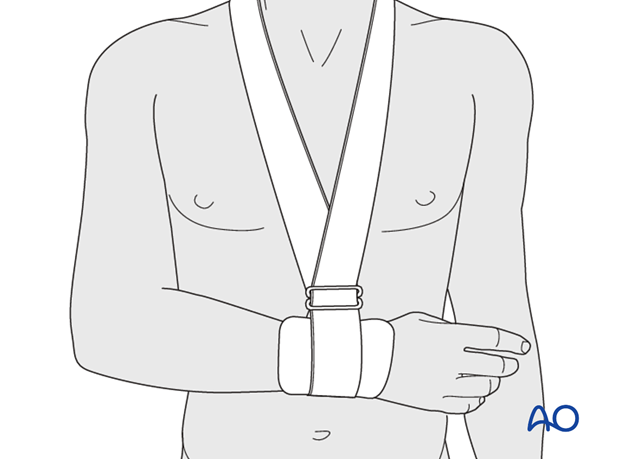
Mobilization
Encourage the patient to move the elbow actively in flexion, extension, pronation and supination as soon as possible. If there is lateral elbow instability (LCL rupture) discourage active shoulder abduction to avoid a gravity induced varus stress on the elbow.
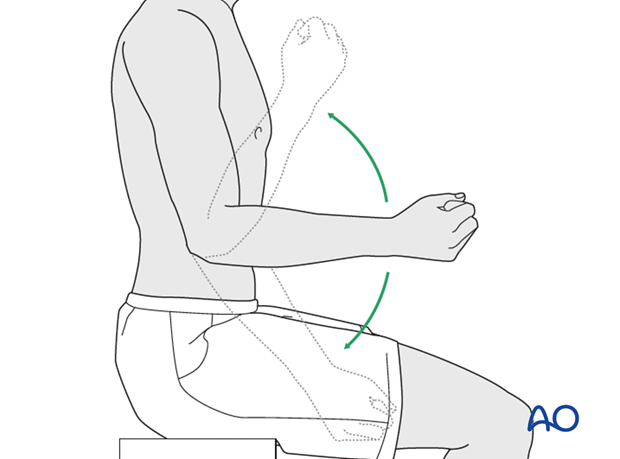
The sling may be removed for early range of motion exercises.
Monitor the patient at regular intervals to assess and encourage range of motion.
Note: Shoulder, wrist and hand movement is also encouraged.
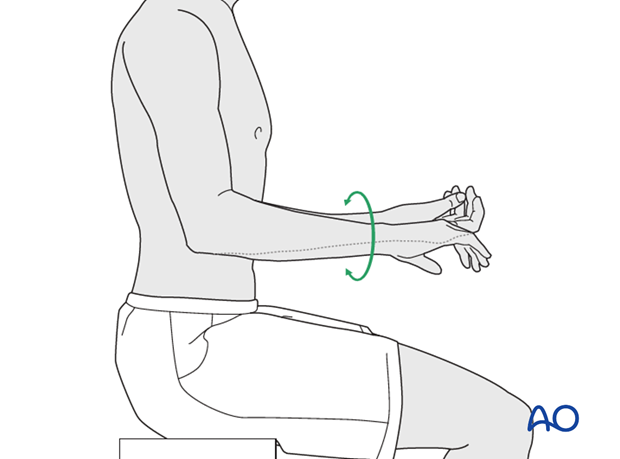
3. Application of a splint
If acute pain or anxiety following injury is too severe for immediate functional treatment as described above, a formal splint may be employed for a short a few days.
The elbow is in 90° flexion and the forearm in neutral position of rotation. With the patient sitting, if possible, padding should be wrapped around the upper arm, elbow, forearm and hand. Finish wrapping at the transverse crease of the hand (leave the MCP joints free). Make sure that the epicondyles of the humerus and the antecubital area are well padded.
Apply splint
After padding, apply a splint of fiberglass or plaster on the posterior aspect of the arm and forearm. The elbow is in 90 degrees of flexion and the forearm in neutral position of rotation. The splint should be deep enough to cover more than half of the circumference of the arm and forearm. Secure the splint with an elastic bandage that should not be too tight.
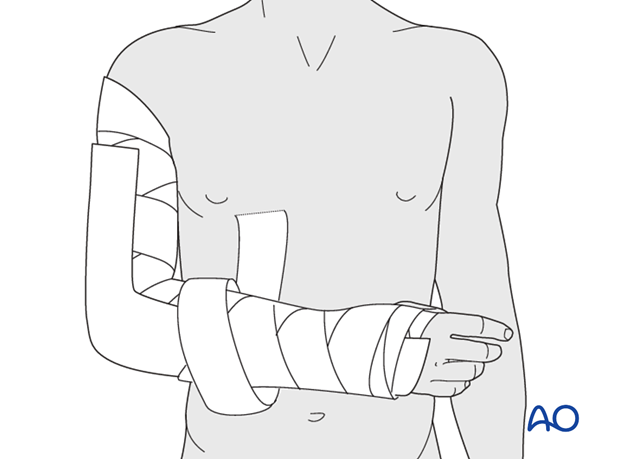
Secure the injured arm with a collar and cuff. Initiate early motion exercises within 5-8 days if possible.
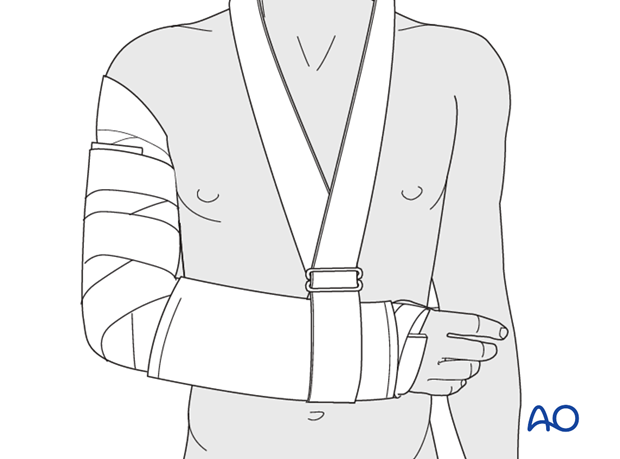
4. Aftercare following nonoperative treatment
For aftercare and rehabilitation following nonoperative treatment please refer to your local protocol.













